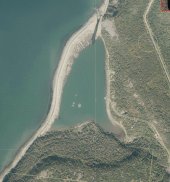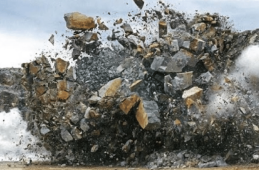jgriffin
New Member
- Joined
- Jan 28, 2021
- Messages
- 46
Hey all,
Looking for some advice on gearing up camps properly to a meaningful amount of solar. We are a remote island who does have some installers that come from nearby cities, but tend to talk people into Lead Acid setups. These camps are not tended all the time, and the next one i'm helping get geared up is actually a 5th wheel trailer. They currently have a 24v 3000 watt AIO hooked up to 4-6v lead acid batteries. They've had experience with much larger setups on an off-grid home, but the transition to a small system has them a bit stumped. Me being super nerdy understands how the hair dryer going for any length of time with other things on is definitely problematic. My first suggestion was to shack the lead acid and go with some server rack lifepo4 to keep costs minimal. There is a sea can these can be placed into if need be, but current lead acid setup is in the front hatch of the 5th wheel.
Hair dryer, Refrigerator, converter for 12V system to keep charged up, Starlink Internet, coffee maker, water heater, and I know air conditioner isn't used, but I know darn well they'll try it sometime if it's there. Fridge and Water heater are likely on propane, but again, I know they'll run out and try to rely on it.
Should I be steering them toward a 48v system where they're already limited by the 3000 watt inverter on the 24v? I was initially thinking of paralleling as many 24v batteries as needed until their needs were met eventually, start them off with 2 for now. But now i'm wondering if I should be getting them to get a whole new 48V AIO with 1 battery for starters, and then expand on that as time went on. Try and educate them a bit more on the frugalness of being off-grid. They do have some nice gas generators they've been relying on.
I haven't been back to the location, but I seem to remember about 600 watt of panels. The most challenging thing of this location is a giant cliff that robs a lot of morning sun, even as much as when it's directly south (the location is actually called Dark Harbour). So i'd be working with SW to W primarily, and can see hours of PV go from the 4-5 range to about 2.5 to 3. The only thing they have going for them is they visit in Summer, winter time everyone out there has struggles getting enough power out of their systems with many overcast days.
So in my mind, it makes sense to go a bit higher than typical with the amount of solar panels, just to try and get what bit of sun is there for a short amount of time. Something with a wide pv range so I can wire panels in series and be within the working voltage range as much as possible.
Where they do leave over the winter and it isn't checked on often, should I be looking more toward keeping batteries warm so they'll actually take a charge safely? is it wise for them to invest in the backup heater? Or just go with an external battery heater for each server rack battery? On the flip side, what can be expected of lifepo4 in the real world if they were charged decently high and then system shut off to not allow for a charge at all?
Any input is greatly appreicated. I'll attach some pictures/video of the location as well. I just wouldn't want them to make a large investment and still not be happy in the end. Build off their existing 24v or start in on their 48v? Thanks!
Looking for some advice on gearing up camps properly to a meaningful amount of solar. We are a remote island who does have some installers that come from nearby cities, but tend to talk people into Lead Acid setups. These camps are not tended all the time, and the next one i'm helping get geared up is actually a 5th wheel trailer. They currently have a 24v 3000 watt AIO hooked up to 4-6v lead acid batteries. They've had experience with much larger setups on an off-grid home, but the transition to a small system has them a bit stumped. Me being super nerdy understands how the hair dryer going for any length of time with other things on is definitely problematic. My first suggestion was to shack the lead acid and go with some server rack lifepo4 to keep costs minimal. There is a sea can these can be placed into if need be, but current lead acid setup is in the front hatch of the 5th wheel.
Hair dryer, Refrigerator, converter for 12V system to keep charged up, Starlink Internet, coffee maker, water heater, and I know air conditioner isn't used, but I know darn well they'll try it sometime if it's there. Fridge and Water heater are likely on propane, but again, I know they'll run out and try to rely on it.
Should I be steering them toward a 48v system where they're already limited by the 3000 watt inverter on the 24v? I was initially thinking of paralleling as many 24v batteries as needed until their needs were met eventually, start them off with 2 for now. But now i'm wondering if I should be getting them to get a whole new 48V AIO with 1 battery for starters, and then expand on that as time went on. Try and educate them a bit more on the frugalness of being off-grid. They do have some nice gas generators they've been relying on.
I haven't been back to the location, but I seem to remember about 600 watt of panels. The most challenging thing of this location is a giant cliff that robs a lot of morning sun, even as much as when it's directly south (the location is actually called Dark Harbour). So i'd be working with SW to W primarily, and can see hours of PV go from the 4-5 range to about 2.5 to 3. The only thing they have going for them is they visit in Summer, winter time everyone out there has struggles getting enough power out of their systems with many overcast days.
So in my mind, it makes sense to go a bit higher than typical with the amount of solar panels, just to try and get what bit of sun is there for a short amount of time. Something with a wide pv range so I can wire panels in series and be within the working voltage range as much as possible.
Where they do leave over the winter and it isn't checked on often, should I be looking more toward keeping batteries warm so they'll actually take a charge safely? is it wise for them to invest in the backup heater? Or just go with an external battery heater for each server rack battery? On the flip side, what can be expected of lifepo4 in the real world if they were charged decently high and then system shut off to not allow for a charge at all?
Any input is greatly appreicated. I'll attach some pictures/video of the location as well. I just wouldn't want them to make a large investment and still not be happy in the end. Build off their existing 24v or start in on their 48v? Thanks!




